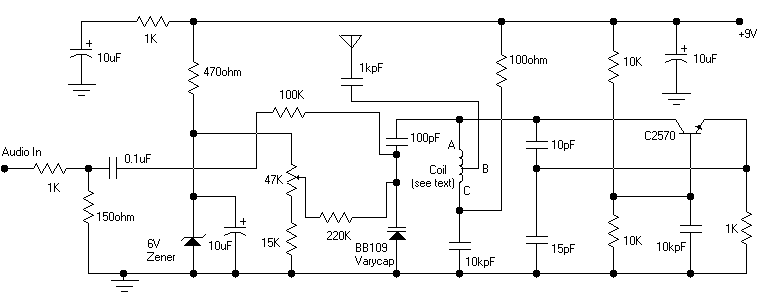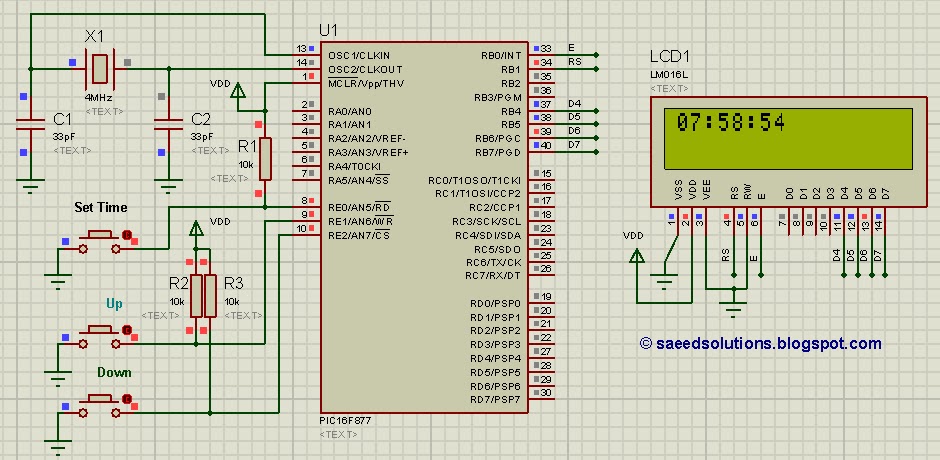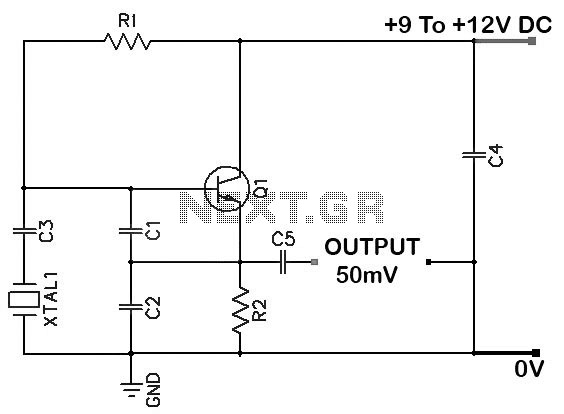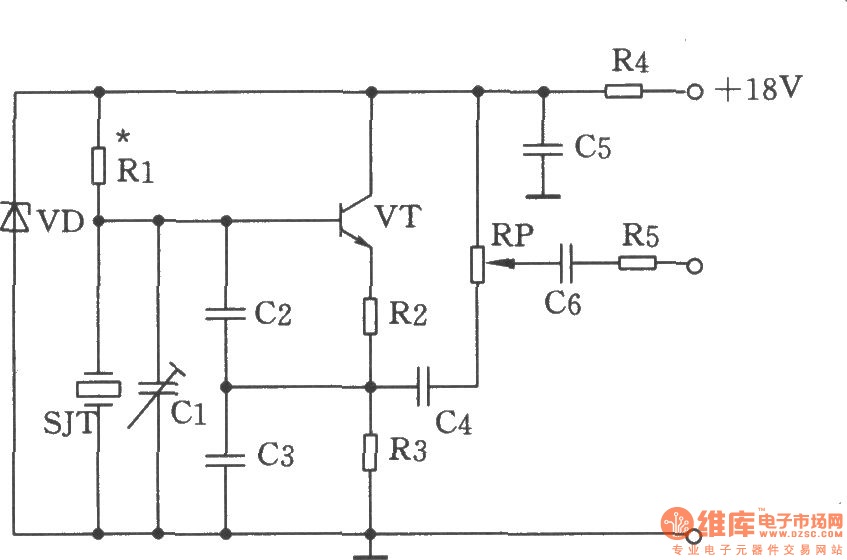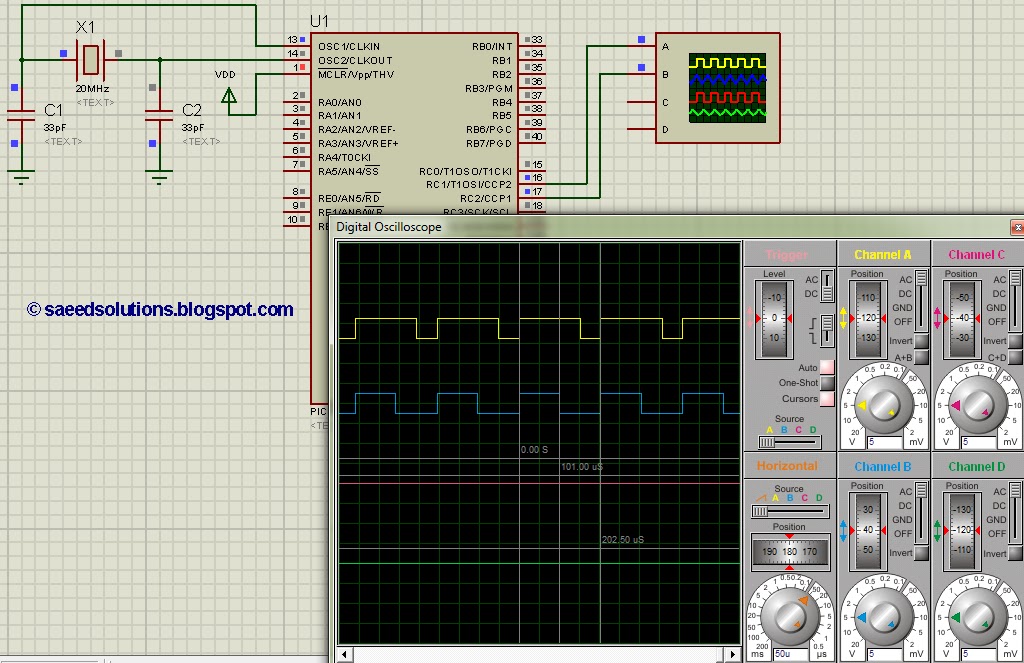
AmpOP Colpitts Oscilator simulation
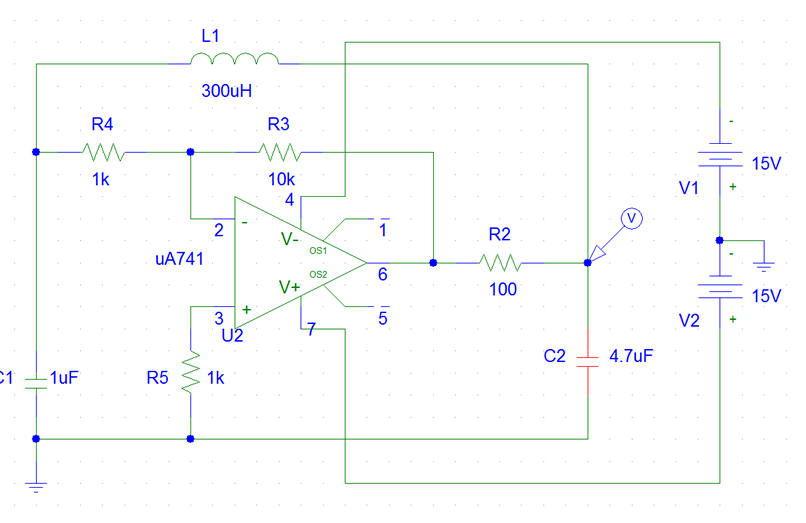
A simulation of a 10 MHz Colpitts Oscillator using an operational amplifier (op-amp) is being attempted; however, the expected frequency of 10 MHz is not being achieved.
The Colpitts Oscillator is a type of electronic oscillator that utilizes a combination of inductors and capacitors to generate oscillations at a specific frequency. The frequency of oscillation is determined by the values of the reactive components in the circuit. In a typical Colpitts configuration, the circuit consists of an op-amp configured for feedback, along with a tank circuit made up of capacitors (C1 and C2) and an inductor (L).
To achieve the desired frequency of 10 MHz, the following parameters must be carefully calculated and implemented:
1. **Component Values**: The frequency of oscillation (f) for a Colpitts oscillator can be calculated using the formula:
\[
f = \frac{1}{2\pi \sqrt{L \cdot C_{eq}}}
\]
where \(C_{eq} = \frac{C1 \cdot C2}{C1 + C2}\) is the equivalent capacitance of the two capacitors in series. It is crucial to select appropriate values for L, C1, and C2 to achieve the target frequency of 10 MHz.
2. **Op-Amp Configuration**: The op-amp should be configured in a feedback loop that ensures the gain is sufficient to sustain oscillations. The gain of the op-amp must be set to at least 3 for the oscillator to start oscillating, which can be achieved through the use of resistors in the feedback path.
3. **Phase Shift Requirement**: The circuit must provide a total phase shift of 360 degrees (or 0 degrees) to satisfy the Barkhausen criterion for oscillation. This is typically achieved by the combination of the reactive components and the op-amp's feedback configuration.
4. **Power Supply and Biasing**: Ensure that the op-amp is powered correctly and that the input and output are properly biased to avoid distortion or clipping of the waveform.
5. **Simulation Parameters**: In a simulation environment, parameters such as the op-amp model, power supply voltages, and load conditions must be accurately set to reflect real-world conditions. Any discrepancies in these settings can lead to deviations in the output frequency.
By addressing these aspects of the Colpitts oscillator design, it is possible to achieve the desired 10 MHz output frequency. If the frequency remains incorrect, further investigation into component tolerances, layout, and simulation settings may be necessary to identify the source of the discrepancy.Hello, I`m trying to simulate a 10MHz Colpitts Oscillator using an OPAMP, but i`m not getting the expected outcome, the frequency is not 10MHz and the .. 🔗 External reference
The Colpitts Oscillator is a type of electronic oscillator that utilizes a combination of inductors and capacitors to generate oscillations at a specific frequency. The frequency of oscillation is determined by the values of the reactive components in the circuit. In a typical Colpitts configuration, the circuit consists of an op-amp configured for feedback, along with a tank circuit made up of capacitors (C1 and C2) and an inductor (L).
To achieve the desired frequency of 10 MHz, the following parameters must be carefully calculated and implemented:
1. **Component Values**: The frequency of oscillation (f) for a Colpitts oscillator can be calculated using the formula:
\[
f = \frac{1}{2\pi \sqrt{L \cdot C_{eq}}}
\]
where \(C_{eq} = \frac{C1 \cdot C2}{C1 + C2}\) is the equivalent capacitance of the two capacitors in series. It is crucial to select appropriate values for L, C1, and C2 to achieve the target frequency of 10 MHz.
2. **Op-Amp Configuration**: The op-amp should be configured in a feedback loop that ensures the gain is sufficient to sustain oscillations. The gain of the op-amp must be set to at least 3 for the oscillator to start oscillating, which can be achieved through the use of resistors in the feedback path.
3. **Phase Shift Requirement**: The circuit must provide a total phase shift of 360 degrees (or 0 degrees) to satisfy the Barkhausen criterion for oscillation. This is typically achieved by the combination of the reactive components and the op-amp's feedback configuration.
4. **Power Supply and Biasing**: Ensure that the op-amp is powered correctly and that the input and output are properly biased to avoid distortion or clipping of the waveform.
5. **Simulation Parameters**: In a simulation environment, parameters such as the op-amp model, power supply voltages, and load conditions must be accurately set to reflect real-world conditions. Any discrepancies in these settings can lead to deviations in the output frequency.
By addressing these aspects of the Colpitts oscillator design, it is possible to achieve the desired 10 MHz output frequency. If the frequency remains incorrect, further investigation into component tolerances, layout, and simulation settings may be necessary to identify the source of the discrepancy.Hello, I`m trying to simulate a 10MHz Colpitts Oscillator using an OPAMP, but i`m not getting the expected outcome, the frequency is not 10MHz and the .. 🔗 External reference
